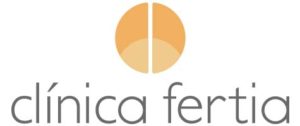What is Polycystic Ovary Syndrome and how does it affect fertility?
Polycystic Ovary Syndrome is one of the most frequent gynaecological endocrine pathologies, affecting 6-10% of women of a reproductive age.
The diagnosis of PCOS is based on the presence of at least two of the following signs:
– Oligo-anovulation,
– Clinical or laboratory signs of excess androgen,
– Polycystic ultrasound-like ovaries.
Many of these women may also have insulin resistance, hyperinsulinemia and obesity, the presence of these risk factors conditions a higher incidence of infertility, cardiovascular disease, type II diabetes, lipid disorders, metabolic syndrome, and increased risk of endometrial cancer.
Different PCOS phenotypes are distinguished: complete, non-hyperandrogenic, no ultrasound presence of a polycystic ovary, and phenotypes with ovulation.

What influence does it have on fertility?
From the reproductive point of view, women with PCOS present ovulation disorders, but it does not seem that this is the only factor involved, since these women also have a higher risk of miscarriages and other obstetric complications.
Reproductive success depends on the quality of the embryos, the endometrium and an adequate interaction between the two. It seems that their low results are more related to changes at the endometrial level than at the oocyte level.
In fact, it has been seen that women with PCOS without hyperandrogenaemia (without excess androgens) present results after In Vitro fertilization cycle similar to that of ovulatory women (1) and egg donor women with or without PCOS who donate their eggs to women with ovarian failure have comparable gestation rates (2). However, at the endometrial level clinical and experimental data are observed that explain that the endometrial tissue in women with PCOS has different characteristics.
Its clinical peculiarities condition an altered expression of hormone receptors at the endometrial level, a greater number of oestrogen receptors, and high levels of oestrogens, resistance to progesterone, with the presence of less reactive isoforms at the endometrial level, high levels of androgens and their receptors, insulin resistance, all of this conditions a situation of mild inflammation, with alteration at the level of immune cells responsible for implantation, as well as alterations in vascularization that could be related to the higher incidence of placentation abnormalities and preeclampsia.
Although all these changes at the endometrial level can lead to low implantation and ongoing pregnancy rates, these poor results vary depending on the different forms of PCOS and its severity.
What steps can be taken?
A change in lifestyle is one of the fundamental factors that can lead to a positive improvement, a hypocaloric diet with low carbohydrate content and higher protein content together with regular aerobic exercise improves metabolic control, favours spontaneous ovulation in obese or overweight women, and improves androgen levels.
Those with hyperinsulinemia or insulin resistance will benefit not only from diet changes but also from the use of medications such as metformin or other medications that help control their insulin resistance. Regarding ovulation induction, the use of Letrozole is considered the best choice, although its use with this indication is not approved in all countries, and in these cases, clomiphene is indicated and as a second-line medication the use of gonadotropins is considered.
In cases that require an In Vitro fertilization cycle, it is recommended to transfer the embryos in a cryotransfer cycle, to achieve a greater degree of synchrony between the endometrium and the embryo to be transferred. Thus, avoiding the negative impact of high oestrogen levels during stimulation, in an endometrium that is already very sensitive to them (3).
Other measures that can be beneficial are to ensure adequate levels of vitamin D, which can be sometimes low in these women, and plays a fundamental role as an immunomodulator during pregnancy.
The administration of coenzyme Q10 antioxidant agent can modulate the oxidative stress present in these patients.
The use of N-acetyl cysteine, mucolytic agent with antioxidant action and with the capacity to improve insulin resistance (4).
All of this can help to improve the results in these patients, although the individualization and assessment of each case is essential and will allow a personalized treatment plan according to their specific needs.
References
- Holte J, Brodin T, Berglund L, Hadziosmanovic n, Olovsson m, Bergh t. Antral follicle counts are strongly associated with live birth rates after assisted reproduction, with superior treatment outcome in women with polycystic ovaries. Fertil Steril.2011;96:594-599.
- Vaz GQ, Evangelista AV, Sartorio CAP, Cardoso MCA,Erthal MC, Gallo P, Oliveira MAP. Are patients with polycystic ovary syndrome ideal candidates for oocyte donation?. Biomed Res Int.2016;5701609.
- Chen Zj, Shi Y, Sun Y, Zhang B, Liang X, Cao Y , Yang J, Lui J, Wei D, Weng N. Fresh versus frozen embryos for infertility in the polycystic ovary syndrome.N Engl J Med.2016;375:523-533
- Palomba s, Piltonen TT, Giudice LC. Endometrial function in women with polycystic ovary syndrome: a comprehensive review. Hum reprod Update. 2020,0:1-35.
